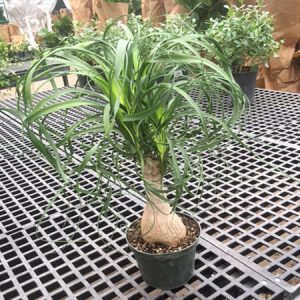Description
Fraxinus – Ash –
There are about 65 species of fast growing, deciduous, rarely evergreen trees, in this genus. They occur in woodland, mainly in the Northern Hemisphere. The leaves are opposite and pinnate, light to dark green, 2-20″ long. The flowers are borne in terminal or axillary panicles or racemes, from spring to early summer. Ashes are grown for their habit and foliage. Most have inconspicuous, petalless flowers, although some, including F. ornus and F. sieboldiana are grown for their ornamental flowers. F. americana, F. pennsylvanica, and F. uhdei usually bears male and female flowers on separate plants, both are need to produce the single-seeded, winged fruits. Ashes are excellent specimen tree for woodland or coastal gardens. They are widely planted as a street and park tree. Some are valued for their timber.
Grow in fertile, moist but well drained, neutral to alkaline soil in full sun. They need space for root system. They are tolerant of coastal salt air, exposed positions, urban pollution, and heavy clay.
Prone to Mycosphaerella leaf spot, powdery mildew, rust, brown cubical rot, white rots, wilt, anthracnose, cankers, twig diebacks, borers, leaf miners, carpenter worm, ash sawfly, fall webworm, and scale insects.
F. biltmoreana – Biltmore Ash – This is a possible natural cross between F. americana and F. pennsylvanica, found in Eastern USA, and grows to 40′ feet tall with a narrow crown. It produces dark green leaves composed of up to 11 leaflets, sometimes sickle shaped, smooth edge or scalloped with blue-green downy hair on the undersides. They turn yellow to maroon in autumn. The winged fruit has a slight notch on the tip.
Zones 4-9





